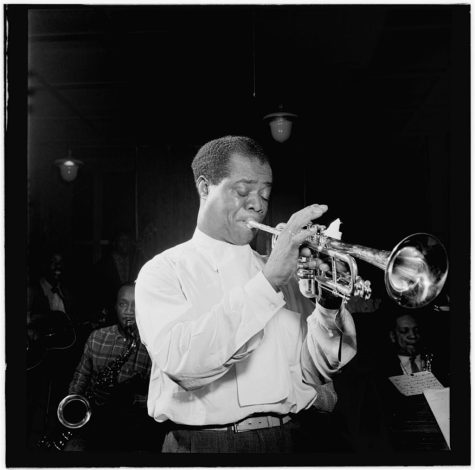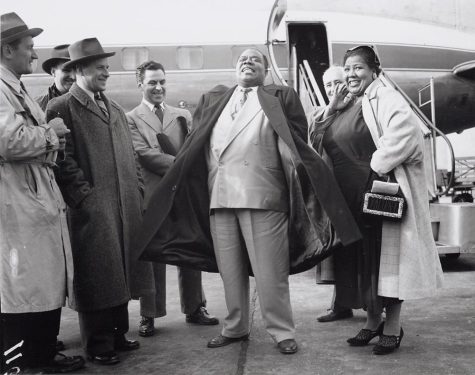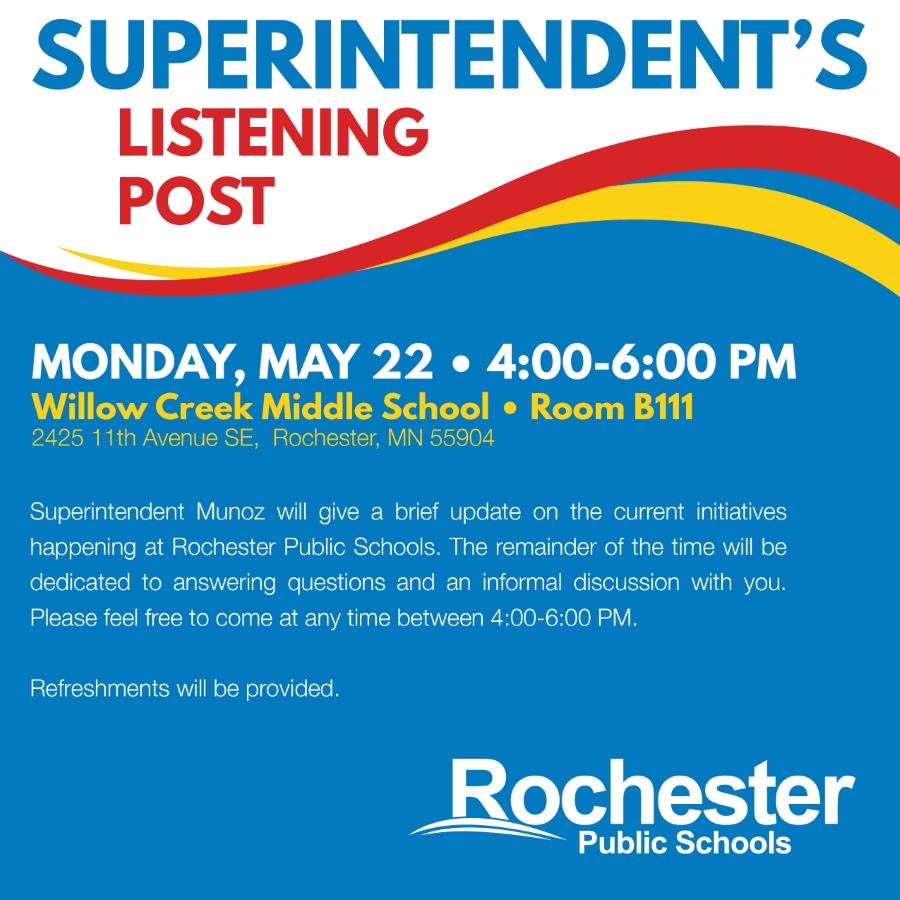Louis Armstrong: The Father Of Jazz
February 25, 2022

The father of jazz is a title given to those who have changed the world of jazz. Besides Charles “Buddy” Bolden and George Gershwin, Louis Armstrong bears this title for his groundbreaking, passionate musical style. Known as Satchmo in the jazz world, Armstrong was highly recognizable as the founding father of jazz (Bain Regina, Executive Director).
Born on August 4, 1901, in a very poor neighborhood, nicknamed “The Battlefield” in New Orleans, Louisiana, Armstrong had a tough childhood. By the 5th grade, he was forced to leave school and start working, where he remained for 5 years until New Year’s Eve in 1912, when he stole his father’s handgun and shot it in the air. He was arrested on the spot and sent to the Colored Waifs Home for Boys (Biography.com, Editor).
There he picked up the cornet, and under the teaching of Peter Davis, learned to play it properly. In time he eventually became the leader of the Waif’s Home Brass Band. In 1914, he left the Waif’s Home, setting his path to become a professional musician. He was connected with the city’s top cornetist, Joe “King” Oliver, and was mentored by him, soon becoming one of the most popular cornetists in the city and eventually picking up a job on the Mississippi riverboats (Bain Regina, Executive Director).
In 1922, things went big for Louis Armstrong. He was asked by his old mentor, King Oliver, to join his band in Chicago. Armstrong agreed in a heartbeat, and with some time, Armstrong and Oliver became the talk of the town with their new style of two-cornets break. A year later, the two decided to start making their own recordings (Bain Regina, Executive Director).
A year after they started recording, Louis Armstrong began dating the group’s pianist, Lillian Hardin, who had been a huge supporter of the musician. She urged him to leave Oliver, whom she believed was holding Armstrong back (Biography.com, Editor).
Hardin pushed him towards joining Fletcher Henderson’s Orchestra, which at the time was the best African American dance band in New York City. After he joined, he immediately changed the style of music, introducing the concept of swing. Armstrong greatly influenced Henderson’s orchestra with his swing style, essentially making them the first jazz big band. Unfortunately, despite the band’s success, his time in New York City didn’t end happily; he soon left and returned to Chicago in 1925, deciding it was time to record his own music (Biography.com, Editor).
After returning to Chicago, he recorded with His Five, soon to be Hot Seven. While recording with the group, Louis Armstrong changed the whole view of jazz, converting it into improvised solos rather than being ensemble-based. He made jazz feel like a platform for a solo artist. Not only did he change the playing style, but he also changed the vocal style as well, using the same swing solo technique. This made Louis Armstrong regain enough popularity to return to New York City, with the Hot Seven (Bain Regina, Executive Director).

The 30s proved to be a very successful decade for the musician. In 1932, Armstrong traveled to Europe to perform, gaining a great deal of popularity through the radio, in films, and by way of his many performances. In 1935, back in America he decided to form his own big band. He recorded pop songs for Decca, and appeared regularly in movies. This was when he earned his first nickname, Satchmo. He got this moniker because he had a very big mouth, and Satchmo was short for Satchel Mouth (Bain Regina, Executive Director).

Because of constant tours overseas, Armstrong was dubbed “Ambassador Satch” (Bain Regina, Executive Director).
Armstrong had his biggest decade in the 60’s. In 1963, he was called in to record for a Broadway show called: Hello Dolly! In 1964 this climbed to be the number one song on the pop chart, knocking off the Beatles during the height of Beatlemania. In 1965, he did the almost impossible, cracking the “Iron Curtain” with a tour in Communist countries, performing in places like East Berlin and Czechoslovakia. In 1967, Louis Armstrong recorded his most notable song in today’s time, called “What a Wonderful World.” This became a number 1 hit around the world (Biography.com, Editor).
Sadly he passed away in 1971, but he did leave a legacy of jazz to beautiful to ignore, with his creation of solo performance as well as swing play and singing. Aside from the jazz world, he was known as a civil rights pioneer. His home in Corona, Queens became a museum and a Nation Historic Landmark in 1977. Through all this Louis Armstrong’s legacy will be remembered and honored for decades to come (Biography.com, Editor).
Sources
Article Title: Louis Armstrong meet Satchmo
Author:
Website Name: Louis Armstrong House
URL: https://www.louisarmstronghouse.org/louis-armstrong/
Access Date: 2/7
Publisher:
Last Updated :
Original Publish Date:
Article Title: Louis Armstrong
Author: Biography.com Editors
Website Name: The Biography.com website
URL: https://www.biography.com/musician/louis-armstrong
Access Date: 2/10/22
Publisher: A&E Television Networks
Last Updated : January 29, 2021
Original Publish Date: April 2, 2014
Images:
file name of image: Ambassador Satch
original source link: https://wordpress.org/openverse/image/e4cb074b-ff13-4bfd-8ea1-fcd564da0fd6
file name of image: Louis Armstrong
original source link: https://wordpress.org/openverse/image/6579e092-fa17-4657-8b3a-e72c0b4ce9b1
file name of image: Louis Armstrong 2
original source link: https://wordpress.org/openverse/image/a4af66c4-e138-4e23-a7ad-ed37565218e1




